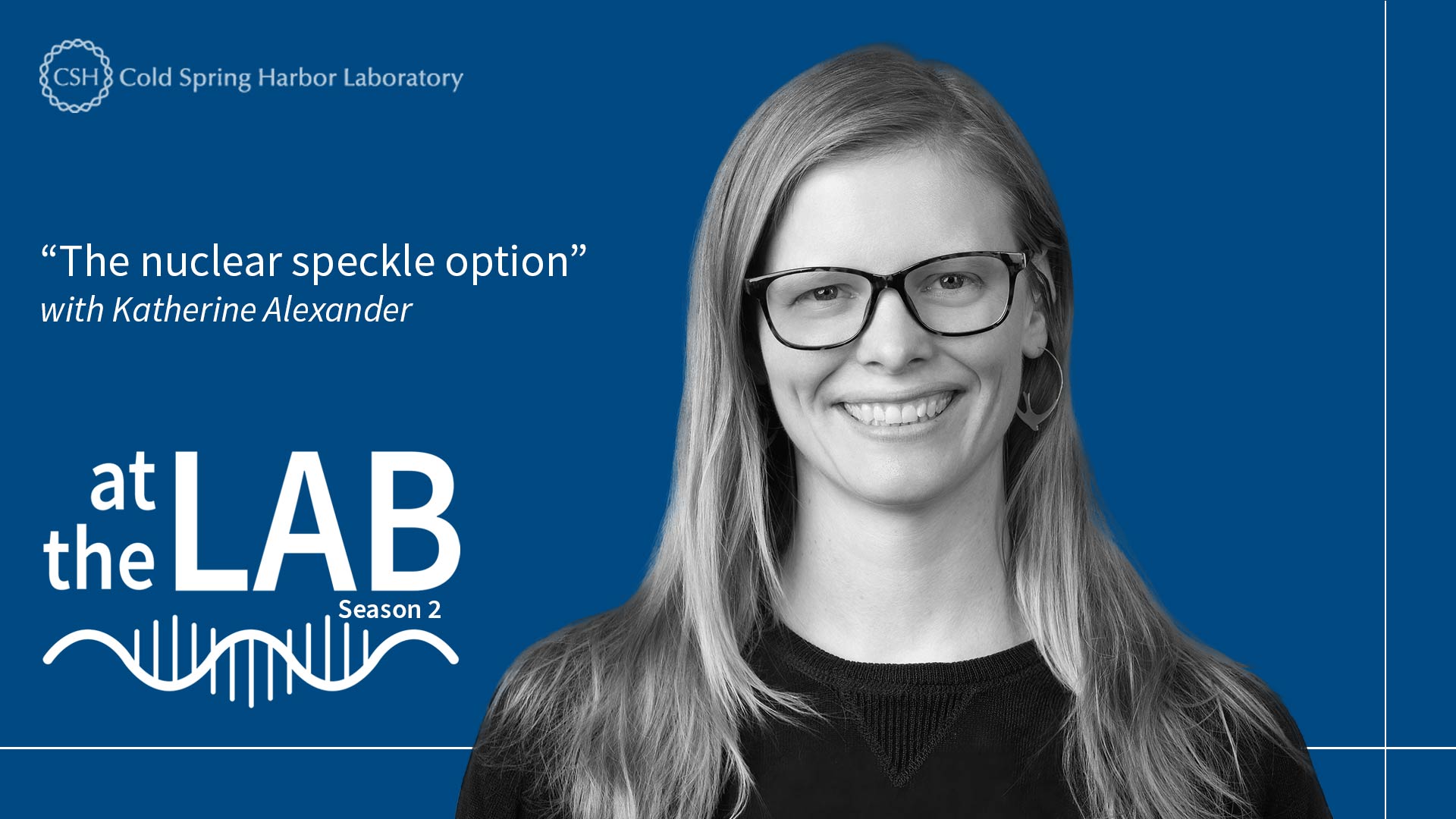This week At the Lab, we’re joined by CSHL Assistant Professor Katherine Alexander, the newest member of the Cold Spring Harbor Laboratory faculty. We’ll also hear about a Spanish bodybuilder who’s been dead for more than 90 years. How in the world are these individuals connected? Hit play to hear all about it.
Read the related story: A speckle of hope for cancer patients
Transcript
Nick Fiore: You’re now At the Lab with Cold Spring Harbor Laboratory. My name is Nick Fiore, and this week At the Lab, “The nuclear speckle option.”
NF: Speckles sound innocuous enough, like little spots or smidgens. But what about nuclear speckles? Actually, as far as health and disease go, that question has gone largely unanswered for over a century.
NF: Our story begins back in 1910. A part-time bodybuilder, full-time physician-scientist named Santiago Ramón y Cajal first observes a curious class of structures inside the cell nucleus using a light microscope. He calls them translucent clumps.
NF: The term nuclear speckles is coined in 1961. And over the following decades, scientists figure out speckles play a role in gene expression. But that’s about it. And that’s where CSHL Assistant Professor Katherine Alexander enters the story.
Katherine Alexander: We’ve known about them for such a long time, but we don’t really understand what they do. What are they important for? So, the purpose of this study was to understand what are they doing in cancer. How do they vary in different kinds of cancer? And is that variation important?
NF: To answer these questions, Alexander and her colleagues looked at patient datasets for 20 different types of cancer. Poring over the data, they eventually discerned two different types of speckle patterns present across all 20 cancers.
NF: There were normal-like patterns, in which the speckles were mostly concentrated around the center of the nucleus. And then there were aberrant patterns, in which the speckles were more spread out.
KA: It’s something that’s consistently happening in a bunch of different cancer types. Then the question is, ‘Is this important? Does this impact the cancer at all?’
NF: In just about every single cancer they looked at, the answer was no. However, in one type of cancer, the speckle patterns seemed to correlate with patient survival rates.
KA: That cancer type was clear cell renal carcinoma. It’s the most prevalent kidney cancer in humans.
NF: So, what was the correlation?
KA: We found that the therapies are more or less effective depending on how the speckles look. So, one therapy was more effective if the speckles look one way, and a different therapy was more effective if the speckles looked the other way.
NF: Many tests will need to be done before this finding can impact clinical decisions. Nevertheless, this discovery is perhaps the strongest evidence to date that nuclear speckles could one day be used as a biomarker to help prescribe cancer patient treatments. And that’s big news, especially for something as small as a speckle.
NF: Thanks again for joining us At the Lab. Please remember to hit subscribe and visit us online at CSHL.edu for more fascinating science stories like this one. For Cold Spring Harbor Laboratory, I’m Nick Fiore, and I’ll see you next time At the Lab.
